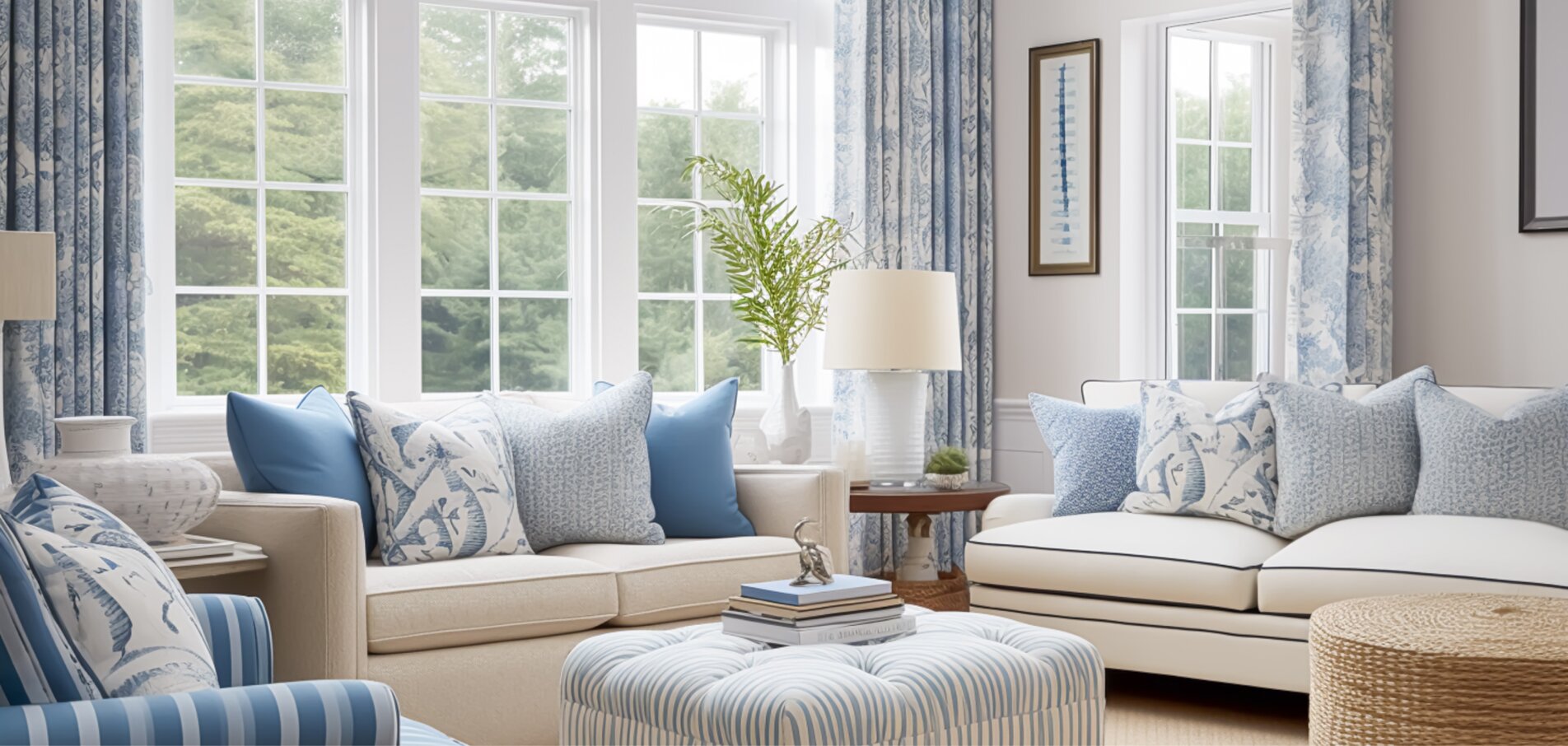You're on the list
By signing up, you agree to receive email marketing.


Traditional interior design is defined by balance. A balance of classic pieces with modern touches. A balance of comfort and sophistication. A balance of muted colors with bold, saturated bursts of color. A balance of textures. Patterns. Pieces from around the world. Even a balance of expected and unexpected. Ultimately, traditional interior design showcases symmetry. Learn how to bring this principle into your home below.
Traditional style interior design is a sophisticated but comfortable approach to home design. This understated style prioritizes creating space for conversation over making a statement. While traditional style homes have a warm, homey, inviting feel, the quality of the craftsmanship and the confidence in the introduction of unexpected, personal pieces into an otherwise classic design style carry a sense of elegance, quality, and polish.
Traditional interior design is a modern take on 18th- and 19th-century French and English Neoclassical or Empire interior design. Traditional style interior design balances the formality of its origins with a focus on comfort and warmth.
The basic elements of traditional interior design have been consistent over the years because an integral feature of the design is blending classic pieces with modern decor. As trends change, outdated pieces are swapped out for new trends while the classics remain untouched.
Certain colors, fabrics, textures, shapes, and materials make up the unique, timeless elements of traditional style interior design. These include:
Plush but subtle fabrics and textures such as cotton, velvet, wool, silk, leather and linen
Gold, brass, and other rich metals
Antiques and vintage items, pieces from around the world
Curves (soft edges) featured in archways, furniture, and decor
Neutral colors accented with deep, bold, saturated colors
Layered, mixed patterns, including plaids, damask, florals, and stripes
A traditional style home has an air of elegance yet remains welcoming. Rather than flat walls with muted colors, a traditional style home's walls might feature wainscoting and crown molding. Rich, dark wood flooring, built-in bookcases, layered window treatments, brick fireplaces, and ornate chandeliers bring warmth to traditional style homes.
The architectural style of a traditional home replicates the symmetry showcased in the interior design. Typically, a traditional home features a simple roofline and symmetrical window placement with the front door at the center of the home. Interior floor plans mirror the symmetry of the outdoors — typically two stories with bedrooms on the second floor and shared living space on the first floor.
Traditional furniture styles tend towards timeless pieces made with an emphasis on craftsmanship. Ample, comfortable seating invites conversation. Stained wood pieces with curves and ornate shapes and designs invite people to sit while remaining visually engaging. Upholstery and textiles feature subtle but rich fabrics and textures. Brass and other rich metals accent ornate furniture pieces.
Some unique pieces of traditional furniture styles include four poster beds, canopy beds, antique dressers, and free-standing, clawfoot tubs. Living room traditional interior design, for example, might feature a leather sofa with chairs upholstered in rich velvet around an antique coffee table. A boldly colored vase from your grandmother's youth in Italy, centered on the coffee table, brings an unexpected but carefully curated balance to the design of the room.
Incorporate traditional interior design style in your home by focusing on balance.
Invest in well-made, classic furniture for your key pieces, such as your couches, tables, dressers, and beds.
Accentuate timeless pieces with modern decor, such as window treatments, decorations, and bedding, that can be replaced as trends change.
Avoid turning balance and symmetry into a uniform look, such as matching furniture sets. When layering patterns, choose patterns of different sizes rather than matching patterns.
Maintain focus on understated comfort and resist aiming for a "wow" factor.
There is a lot of leeway for you to make traditional style home decor your own. Above all, however, focus on well-made pieces and arrange them invitingly.
New traditional decorating styles introduce more contemporary elements into the timeless world. Homes with more modern decor might feature:
Treillage latticework or wood-paneled walls
Antique brass fixtures with other mixed metals
Built-in nooks
Bolder colors
Open-plan spaces with center kitchen islands
A nod to Greco-Roman design with marble, plaster, or wood front porch columns or freestanding pedestal columns indoors serving as bases for art, vases, and other decor
Traditional glam style is more glam than traditional. While still ornate, traditional glam features less symmetry in design and seeks rather than avoids the "wow factor." More unexpected elements appear in traditional glam styles, such as candles in a fireplace or fuzzy throw pillows. You may also see more metals mixed in and bolder color choices.
The less ornate elegant traditional style is cleaner and less busy. Colors are more uniform and neutral with one or two smaller elements with bold color choices. While elegant traditional interior design decor incorporates unexpected pieces into timeless, classic designs, surprises are more subtle.
If you are ready to explore traditional interior decor style, start by researching your investment pieces: the high-quality, well-made pieces you can build your rooms around. Then begin to seek out those unexpected touches such as unique finds at an antique store, your mom's old plate collection, or a bold-colored print from your recent trip to Spain. However you incorporate traditional style into your home, the warm, inviting decor will help bring balance to your home.
You're on the list
By signing up, you agree to receive email marketing.